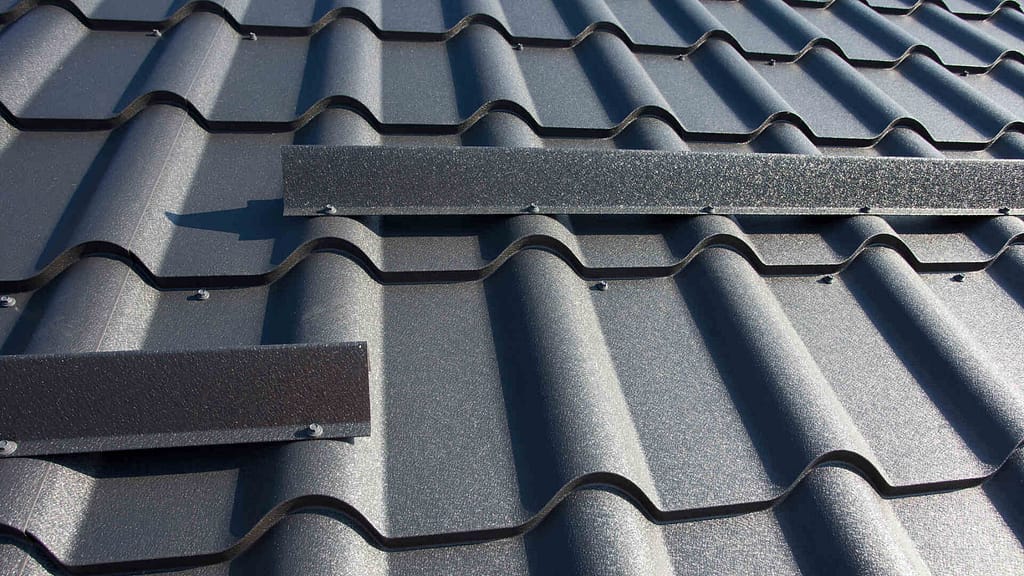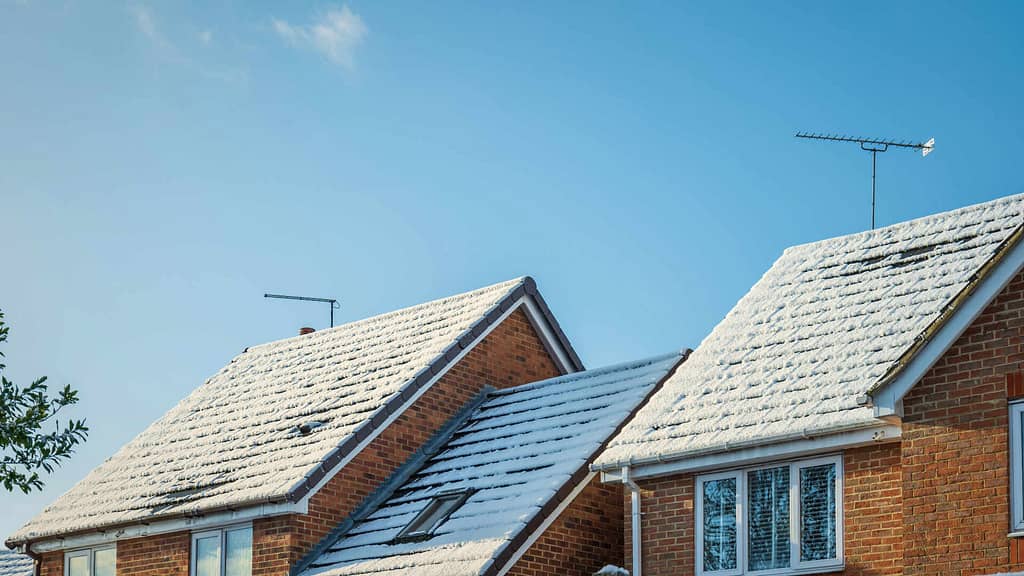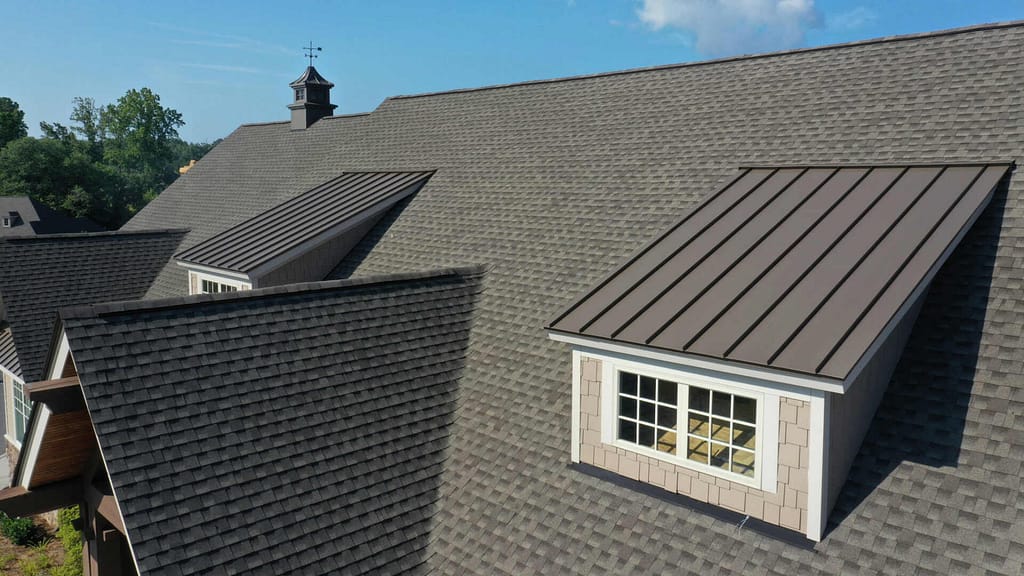Choosing the best roofing material depends on your budget, climate, and style preference. This blog helps you compare materials like metal, asphalt, and slate to find what suits your home’s needs and your personal taste.
Table of contents
Factors to Consider When Choosing the Best Roofing Materials
When selecting the right roofing material for your home, several key factors can influence your decision. It’s important to choose a material that not only looks good but also fits your budget, lasts a long time, requires manageable upkeep, and has a minimal environmental impact. Below, we explore these considerations in more detail.
Durability
Different roofing materials offer varying lifespans and durability. For example, metal roofs can last up to 50 years or more with minimal maintenance, while asphalt shingles may need replacement every 20 years. Choosing a durable material can save you money and hassle in the long run.
Cost
The price of roofing materials can vary widely. Asphalt shingles are generally the most affordable option, while materials like slate are on the pricier side. However, it’s crucial to consider not just the initial cost but also the long-term savings. More expensive materials like metal or tile might offer better longevity and less frequent replacements.
Maintenance Requirements
Every roofing material has its own maintenance needs. For instance, wood shingles require regular treatments to prevent rot and insect damage, whereas metal roofing needs little more than occasional cleaning. Understanding the maintenance requirements will help you choose a material that fits your willingness to perform upkeep.
Aesthetic Appeal
The appearance of your roof can significantly impact the overall look of your home. Materials like clay tiles or cedar shakes can offer a distinct style and character, while others like composite shingles provide a more uniform appearance. Consider what visual impression you want your house to make.
Environmental Impact
If environmental sustainability is important to you, consider roofing materials that are eco-friendly. For example, recycled shingles can lower your carbon footprint, and materials like metal are fully recyclable at the end of their lifespan. Some materials also reflect sunlight better than others, which can help in reducing energy costs by keeping your home cooler.
Types of Roofing Materials

Choosing the right type of roofing material is essential for ensuring the longevity, efficiency, and beauty of your home. Each material comes with its own set of benefits and challenges. Here’s a look at some popular roofing materials to help you understand what might work best for your house.
Asphalt Shingles
Asphalt shingles are a popular choice due to their affordability and easy installation. They typically last between 15 to 30 years. While they are cost-effective, they may not withstand extreme weather as well as other materials and could require more frequent replacements after severe weather events. Discover more about Asphalt Roofing in our blog post: “What is an Asphalt Roof?“
Metal Roofing
Metal roofing comes in various types, including steel, aluminum, copper, and zinc. This roofing is known for its durability, fire resistance, and excellent performance in shedding rain and snow. Metal roofs can last 40 to 70 years or more. Although they offer long-term savings due to their durability, the initial cost can be higher than some other options, and they might be noisy during rainstorms if not properly insulated. Find out more about the durability of metal roofs in our blog post: “How Long Do Metal Roofs Last?“
Clay and Concrete Tiles
Clay and concrete tiles are extremely durable and perfect for hot climates due to their excellent heat reflection capabilities. They are generally more expensive than asphalt but offer a lifespan of over 50 years. These tiles maintain their color and strength well over time, though they require a sturdy structural support due to their weight.
Slate
Slate roofing is prized for its natural beauty and longevity, often lasting over 100 years. It’s one of the most durable roofing materials available but also one of the most expensive. The heavy weight of slate requires a reinforced roofing structure, and its cost can be prohibitive for some homeowners.
Wood Shingles and Shakes
Wood shingles and shakes provide a rustic and natural aesthetic that appeals to many homeowners. They typically last about 25-30 years but require regular maintenance to prevent issues like rot, mold, and insect damage. Wood roofing can be moderately expensive and may also increase insurance costs due to its lower fire resistance.
Synthetic Roofing Products
Synthetic roofing materials, made from plastics, rubber, or composites, are designed to imitate the look of natural wood or slate. These products are lightweight, cost-effective, and offer good durability. They are also more fire-resistant than natural wood and typically have a lifespan of 40-50 years, making them an attractive option for those seeking the appearance of natural materials without the associated maintenance.
Choosing the Best Roofing Material for Your Climate

Selecting the right roofing material isn’t just about appearance or cost; it’s also essential to consider your local climate. Different materials perform better in specific weather conditions, and choosing wisely can extend the life of your roof and enhance your home’s energy efficiency. Below, we explore how to match roofing materials to various climatic conditions, with a practical example to help you understand the best choices.
- High Heat Climates
- In areas with high temperatures and strong sun exposure, it’s important to choose roofing materials that reflect heat rather than absorb it. Metal roofing is excellent for such climates because it reflects solar heat, helping to keep homes cooler and reduce air conditioning costs. Tiles, especially light-colored clay or concrete, are also effective as they have natural thermal resistance properties.
- Example: In Phoenix, Arizona, known for its scorching summers, metal or light-colored tile roofs are ideal. They help maintain cooler indoor temperatures without overworking air conditioning systems.
- Cold Winters
- For regions that experience harsh winters with lots of snow and ice, a durable and water-resistant roofing material is crucial. Metal roofs are advantageous here as well, due to their strong resistance to snow and ice, which easily slide off their slick surface, preventing buildup and potential damage.
- Example: In Minneapolis, Minnesota, where winters are cold and snowy, metal roofs are a popular choice because they can handle the heavy snowfall and aid in preventing ice dams.
- Heavy Rainfall
- Areas that receive heavy rainfall require roofing materials that can withstand a lot of water without leaking. Asphalt shingles and slate tiles are good options as they provide substantial water resistance. However, it’s crucial to ensure proper installation and regular maintenance to prevent any issues related to water damage.
- Example: In Seattle, Washington, known for its rainy weather, asphalt shingles are commonly used because they effectively repel water when properly installed and maintained.
Choosing the Best Roofing Material That Suits Your Needs

When it comes to finding the best roofing material for your home, the ideal choice often depends on a variety of factors including your location, budget, climate, and personal taste. Understanding how to balance these elements can help ensure that your roofing material not only fits your lifestyle but also enhances the aesthetic and functionality of your home.
Tailor to Your Lifestyle and Location
Your daily life and where you live play significant roles in choosing suitable roofing. If you’re someone with a busy lifestyle, opting for low-maintenance materials like metal or synthetic products can be advantageous. These options require less upkeep and are durable in various weather conditions, making them practical for both busy households and demanding climates.
Complement Your Home’s Style
The architecture of your home is critical in selecting a roofing material that complements its design. For example, traditional materials like slate or wood shakes may be perfect for preserving the historical integrity of classic homes. On the other hand, modern homes could benefit from the sleek appearance of metal roofing, which can be tailored to both contemporary and rustic aesthetics depending on the finish.
Balance Practicality with Aesthetic Desires
Ultimately, the best roofing material for your home balances practical needs with your aesthetic preferences. It’s important to consider how different materials stand up to the local climate while also fitting within your budget. For instance, while slate might offer an appealing look and incredible longevity, it’s heavy and costly, which might not be ideal if your home cannot support the weight or your budget is limited.
Conclusion
In answering the question, “What is the Best Roofing Material?” it becomes clear that the optimal choice depends on a variety of personal and environmental factors. No single material stands out as the best for every situation; instead, the right option for your home will vary based on your specific needs, from climate impact to aesthetic preference. Throughout this blog, we’ve examined how different materials like asphalt shingles, metal roofing, and clay tiles cater to diverse conditions and budgets, highlighting that the best material for a home in Phoenix may differ significantly from what’s best for a home in Minneapolis.
As you consider which roofing material to choose, it’s crucial to balance functionality with style, ensuring that your selection not only withstands the test of time and weather but also complements the architectural beauty of your home. Remember, the best roofing material is one that addresses your climatic challenges, fits within your budget, and meets your aesthetic desires. By carefully considering the factors discussed, you can make an informed decision that enhances the value and comfort of your home. Consult with professional roofers to tailor your choice to your specific circumstances, ensuring that your roof is as functional as it is attractive. If you’ve chosen the roofing material for your project, try our roofing calculator. It’s the ideal tool to estimate the materials needed for your roofing job.
Fact checked by Adrian Catolico – 6/25/2024
